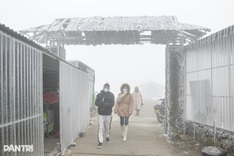The number reflects a slight 1 per cent decrease from April but a robust 13 per cent increase year-on-year.
Despite macroeconomic uncertainties and higher financial costs, the market maintained positive momentum in the second quarter.
Of the total sales, 20,014 units were passenger cars, 8,983 were commercial vehicles, and 213 were special-purpose vehicles. While passenger car sales fell 3.6 per cent month-on-month, commercial vehicle sales rose by 4 per cent and special-purpose vehicles climbed 6 per cent.
Sales of locally assembled vehicles reached 13,800 units in May, down 1 per cent from April, while completely built-up imported units totalled 15,410, down 2 per cent. Although these decreases were marginal, they indicate shifting consumer preferences between domestic and imported vehicles.
From January to May, VAMA members sold a total of 104,780 vehicles, a 12 per cent increase compared to the same period in 2024. Passenger car sales rose 7 per cent, commercial vehicles 20 per cent, and special-purpose vehicles 4 per cent. Notably, sales of hybrid vehicles surged 57 per cent year-on-year, highlighting a growing shift toward environmentally friendly, fuel-efficient models.
During the first five months, locally assembled vehicle sales increased 13 per cent, while imports jumped 29 per cent, underscoring a recovery in import activities and intensifying competition for domestic manufacturers.
VAMA expressed optimism for continued growth in the second half of 2025, particularly in the passenger car and green vehicle segments, supported by macroeconomic stability and favourable government policies.
Industry analysts project that total automobile sales in Vietnam could exceed 250,000 to 260,000 units in 2025, representing growth of approximately 10 to 12 per cent over 2024. The hybrid and fuel-efficient segments are expected to grow by 40 per cent or more, driven by rising incomes, a cooling interest rate environment, and incentives for green vehicle development.
Experts believe Vietnam’s auto market will sustain its upward trajectory through the second half of the year, propelled by consumer demand for economical, environmentally friendly, and safe vehicles.




















